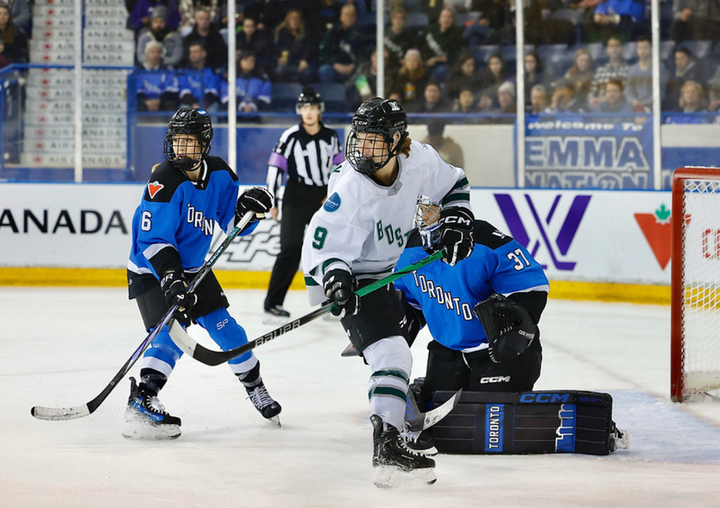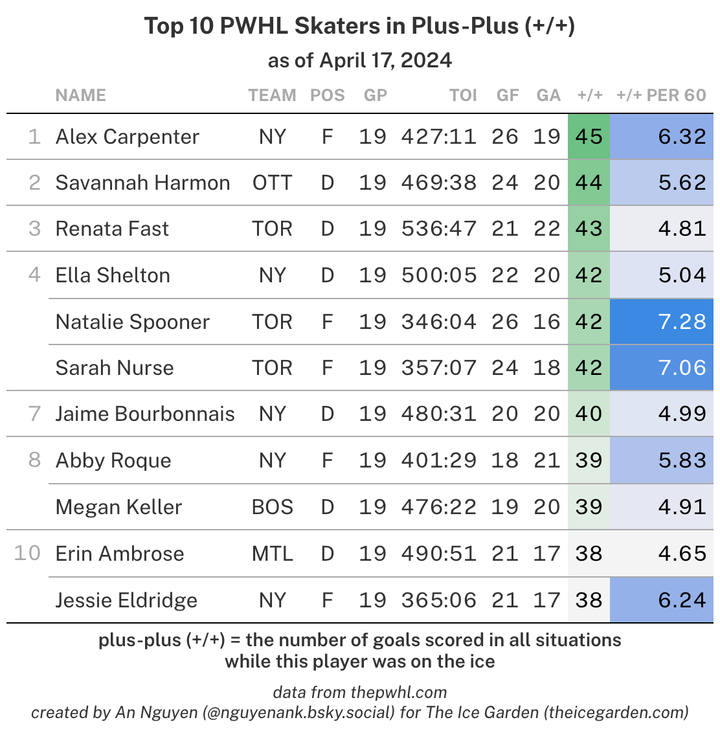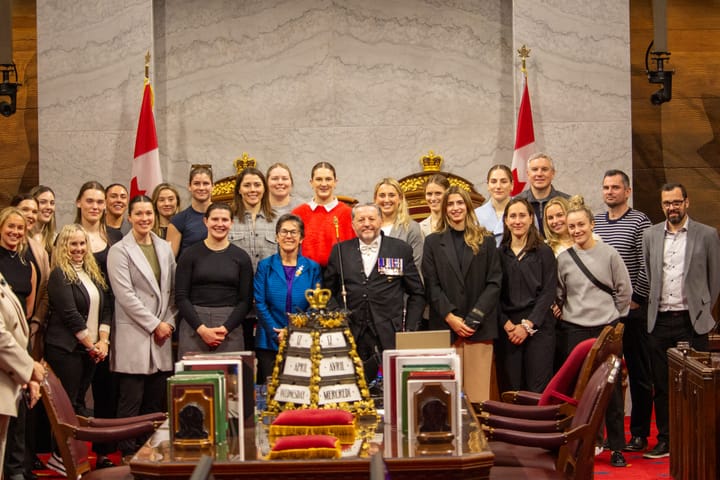This year Tornado HK fell from ZhHL superpower to a team that missed the playoffs
Are Tornado’s days of being one of the top teams in the ZhHL over?
Before this year Tornado HK was considered a powerhouse in the Zhenskaya Hockey League (ZhHL). They won seven titles in 10 years before the ZhHL reorganized in 2015. In 2015–16, the first season after reorganization, Tornado added to its reputation by becoming Champions of Russia. They repeated that feat in 2017 and made it to the final in 2018, but were defeated by Agidel Ufa, the ZhHL’s other superpower.
So, when Tornado, with its talented young roster, failed to make the playoffs this season it was a big deal. A very big deal.
The face of the franchise
Tornado’s roster features some of the brightest young stars in Russian hockey. Anna Shokhina is at the top of that list. Agidel Ufa’s Olga Sosina may have been Russia’s most impactful forward in the most recent Olympic cycle, but Shokhina has always had the higher ceiling. Since the ZhHL’s reorganization, she has averaged an amazing 2.27 points per game in the regular season; Sosina has averaged 2.02 Pts/GP in that same window.
The 2018–19 season was Shokhina’s fourth as Tornado’s captain; that is quite a feat for someone who is turning 22 in June. Even more impressive is that last season marked the third-consecutive year where she won the ZhHL’s scoring title. When she is on her game she is, essentially, a one-woman scoring machine.
Shokhina scored 36 goals and tallied 40 assists in 33 regular season games this season. Sosina was her closest competition but finished seven points behind her — despite appearing in three more regular season games.
Shokhina is undeniably a leader, but she’s not the team’s only talent. In addition to Shokhina, Tornado’s roster also features star forwards Yelena Dergachyova and Alevtina Shtaryova. Dergachyova, 23, and Shtaryova, 22, are the other two-thirds of Tornado’s outstanding top line. Like Shokhina, Dergachyova and Shtaryova have been vital to the Russian national team’s success. They have also both finished in the top-four of ZhHL scoring in three of the last four seasons.
In other words, Tornado has at least three of the top-five forwards in Russian professional women’s hockey. This year the team also had two defenders — Nina Pirogova and Anna Savonina — who represented their home country in the 2018 IIHF Women’s World Championship. Dynamo St. Petersburg also sent five Russians to the 2018 Worlds; Agidel Ufa sent four.
The decline
So, how did a talented team like Tornado fail to qualify for the 2019 ZhHL Playoffs?
At the conclusion of the regular season Tornado finished second in total goals scored, behind only Agidel. Despite averaging over four goals per-game (G/GP), Tornado had just 15 regulation wins in their 36-game schedule. They won four other games in overtime, but finished five points behind SKIF Nizhny Novgorod in the standings.
It is undoubtedly impressive that Tornado averaged 4.05 G/GP in the 2018–19 regular season, but that scoring rate was markedly down from the 4.78 G/GP that the club averaged in 2017–18. Similarly, the team’s collective goals against average (GAA) jumped from 2.16 in 2017–18 to 2.75 last season. So the skill was still there this year, but Tornado wasn’t the team they were a year ago.
A lack of depth
Tornado’s offense had to adjust to the absence of star winger Lyudmila Belyakova. Belyakova was one of two players on the team who missed the season on maternity leave; she gave birth to her child in January. Belyakova, who was one of Russia’s few standouts at the PyeongChang Olympics, was the key ingredient in Tornado’s potent second line. That is evidenced by the 42 goals she scored in 52 games with Tornado over the 2016–17 and 2017–18 regular seasons.
WHL (RUS) Goal Leaders
— Mike Murphy (@DigDeepBSB) January 27, 2017
Anna Shokhina TPH, 26G
Ludmila Belyakova TPH, 23G
Olga Sosina АГД, 19G
Fanni Gasparics АГД, 16G
Nicol Čupková АГД,16G pic.twitter.com/Q7JhPJEif9
The void left by Belyakova was amplified by the diminishing returns that Tornado has received from 35-year-old winger Galina Skiba. Three years ago Skiba scored 16 goals for Tornado; she has scored just eight goals in her past 59 games. She is still an effective player, but her production is definitely on the decline. Skiba hasn’t been the same since she was banned from international competition for life in 2017.
Tornado’s offense simply wasn’t as deep as it had been in years previous. When teams had success slowing down or shutting down Tornado’s big trio last season, they’d be well on their way to coming away with a regulation win.
The team also had to adjust to the departure of national team defender Maria Batalova. She moved over to rival Agidel during the offseason. Batalova, 23, is one of the best Russian defenders on the planet. Like Belyakova, she was nearly impossible to replace.
The blame game
Head coach Alexei Chistyakov introduced seven players from Russia’s junior team into his lineup at the start of the season, but that group was unable to replace the quality that Tornado lost. Tornado went from having nine teenagers on its roster in 2017–18 to 16 teenagers last season. According to Elite Prospects, the average age of the team was 19.96.
At the end of the season, Chistyakov offered his opinions on what went wrong in an interview with the ZhHL’s league site. Even through Google Translate, it is clear that he was not impressed with the play of the team’s youngest players.
“Of the youth this season, I can only single out, perhaps, Anna Savonina, who played at the level that was expected of her — in the second half of the season Daria Zubok looked good.”
It hardly seems fair or even appropriate to put the burden of this disappointing season on teenagers. Although it is worth mentioning that 20-year-old Savonina was the oldest player on Tornado’s blue line. That in and of itself shows just how inexperienced this club was outside of a handful of veterans.
So, what about the team’s leadership? Shokhina earned a career-high 65 penalty minutes and was suspended for two games in the final days of season when Tornado was trying to claw its way into the playoffs. But Chistyakov, who was so quick to criticize the youngest players on his club, came to his star player’s defense.
“I do not see any connection here. Anna is the leader of our team; each opponent always pays close attention to her. If one of our leaders is closed, then by itself other leading players must take the burden of leadership and drag the team forward. Alas, this did not happen, as in many matches of the season. We’ve been waiting for more from many of our experienced players.”
Adjustments to be made
Clearly, there needs to be a change in Tornado’s roster construction — and that doesn’t just mean having fewer teenagers in the lineup. After all, the club has had plenty of success in the past with youthful rosters.
Something that does need to change is Tornado’s lack of diversity. Since the ZhHL’s reorganization, Tornado HK’s lineup has been comprised exclusively of Russian players. It’s worth noting that there were only eight non-Russian players in the league in 2018–19, but Tornado was one of just three teams that didn’t have an international player on its roster.
One needs only look at the strides that SK Gorny made this year to appreciate what international talent can bring to a team. And SK Gorny isn’t the only example; last season Agidel had Slovak star forward Nicol Čupková and Czech star forward Alena Mills. They finished sixth and ninth in scoring this year.
ПЯТ-НИ-ЦА! 💥#КрасиваяЛига pic.twitter.com/93Ed0ICKOp
— ЖХЛ. Красивая Лига (@whl_ru) April 26, 2019
Unless something unexpected happens with pro women’s hockey in North America, Tornado and the rest of the ZhHL have a unique opportunity to recruit some of the best players in the world. What would the addition of a member of the United States or Canadian women’s national team mean for the development of Tornado’s youth, including Shokhina, Dergachyova, and Shtaryova?
That’s a question that Chistyakov needs to ask himself, if he hasn’t already. He also needs to find a way to bolster his team’s scoring depth and bring more experience to the blue line. Some of those solutions could come from young players stepping up into bigger roles next year, but it would be wise for Tornado to also look for answers from the outside. Some established players would go a long way in taking pressure off of the top line and the team’s youngest players.
The good news for Tornado is that they are only a few pieces away from returning to be the team they were just a few years ago. All that matters now is making the right moves in the offseason.
All data courtesy of whl.khl.ru, eliteprospects.com, and IIHF.com.





Comments ()